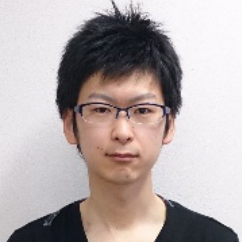
Ryusuke Hata
Work place: Dept. of Human and Artificial Intelligence Systems, Graduate School of Engineering, University of Fukui, Japan
E-mail: hata.r.1324@gmail.com
Website:
Research Interests: Computer systems and computational processes, Neural Networks, Computer Networks, Data Structures and Algorithms, Logic Calculus, Logic Circuit Theory
Biography
Ryusuke Hata received his M.E. and Ph.D. in Human and Artificial Intelligent Systems in 2014, and the Ph.D. in System Design Engineering in 2017 from University of Fukui, Japan. His research interests include neural networks, fuzzy logic, and autonomous systems.
Author Articles
Simplified Real-, Complex-, and Quaternion-Valued Neuro-Fuzzy Learning Algorithms
By Ryusuke Hata M. A. H. Akhand Md. Monirul Islam Kazuyuki Murase
DOI: https://doi.org/10.5815/ijisa.2018.05.01, Pub. Date: 8 May 2018
The conventional real-valued neuro-fuzzy method (RNF) is based on classic fuzzy systems with antecedent membership functions and consequent singletons. Rules in RNF are made by all the combinations of membership functions; thus, the number of rules as well as total parameters increase rapidly with the number of inputs. Although network parameters are relatively less in the recently developed complex-valued neuro-fuzzy (CVNF) and quaternion neuro-fuzzy (QNF), parameters increase with number of inputs. This study investigates simplified fuzzy rules that constrain rapid increment of rules with inputs; and proposed simplified RNF (SRNF), simplified CVNF (SCVNF) and simplified QNF (SQNF) employing the proposed simplified fuzzy rules in conventional methods. The proposed simplified neuro-fuzzy learning methods differ from the conventional methods in their fuzzy rule structures. The methods tune fuzzy rules based on the gradient descent method. The number of rules in these methods are equal to the number of divisions of input space; and hence they require significantly less number of parameters to be tuned. The proposed methods are tested on function approximations and classification problems. They exhibit much less execution time than the conventional counterparts with equivalent accuracy. Due to less number of parameters, the proposed methods can be utilized for the problems (e.g., real-time control of large systems) where the conventional methods are difficult to apply due to time constrain.
[...] Read more.Other Articles
Subscribe to receive issue release notifications and newsletters from MECS Press journals